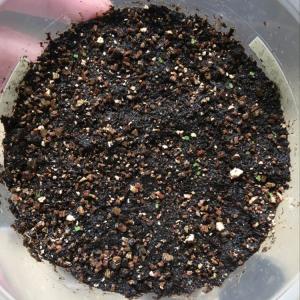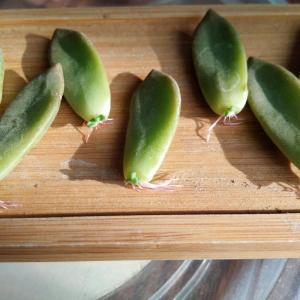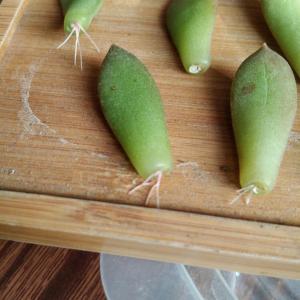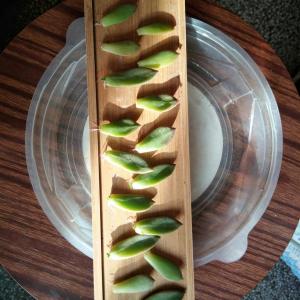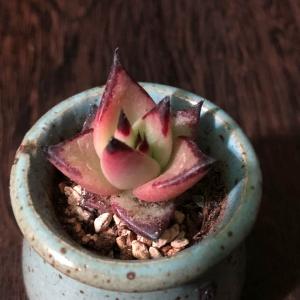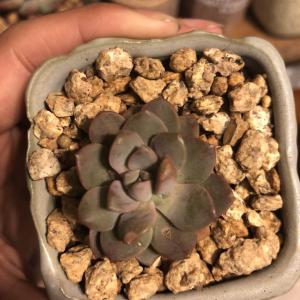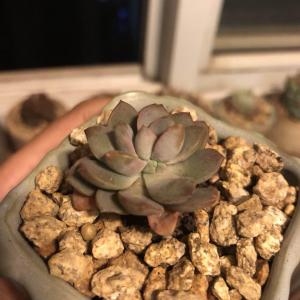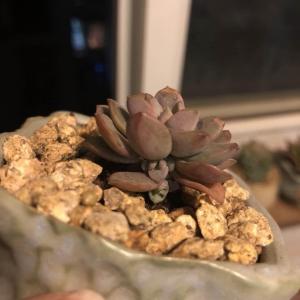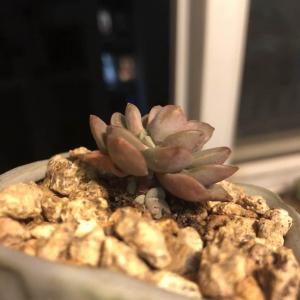文章
Miss Chen
2018年01月12日

Description: This perennial herbaceous plant is 1-3' tall, consisting of a rosette of leaves from which a flowering stalk develops. The basal leaves are up to 6" long and 2" across, tapering to a narrow petiole. They are ovate or oblanceolate, usually with smooth margins, and have scattered white hairs that are ½" or less. The flowering stalk is variably hairy, with a few small leaves alternating along the lower half. The upper half of the stalk is either leafless, or has a few tiny leaves that resemble bracts. Generally, the lower stalk is conspicuously hairy (particularly near the bases of the leaves), while the upper stalk has few or no hairs, except where the flowers occur. This stalk terminates in a panicle of composite flowers. Each composite flower is about ½–¾" across, consisting of a head with 15-30 yellow ray florets. The ray florets have tips that are truncated, ending in 5 small teeth. The blooming period is mid-summer to early fall, and lasts about 1-2 months. Beneath the ray florets, there is a cylindrical arrangement of narrow bracts. These bracts are green or purplish green. The slender stems within the panicle have glandular hairs that are ½" or less; like the bracts, these stems are green or purplish green. The florets are eventually replaced by achenes with white or brown tufts of hair. These achenes are spindle-shaped, tapering at both ends; they are dispersed by the wind. The root system consists of a short crown with fibrous roots underneath; sometimes rhizomes are produced, enabling vegetative reproduction.
Cultivation: The preference is full sun to light shade, and moist to slightly dry conditions. Gronovius' Hawkweed normally grows in soil that is sandy or rocky, which reduces competition from other plants. The height of this species is variable, depending on such factors as light and moisture levels.
Range & Habitat: The native Gronovius' Hawkweed is scattered throughout Illinois, except for many counties in the NW and central areas of the state (see Distribution Map). Depending on the area, it is occasional to rare or absent. Habitats include moist to mesic sand prairies, sandy thickets, openings in rocky or sandy woodlands, savannas, bluffs, and edges of fields. Where this plant grows in shade, it is usually taller and grows in drier locations. Where it is sunny, this plant is usually shorter and prefers moister locations.
Faunal Associations: The nectar or pollen of the flowers probably attracts many kinds of insects, including long-tongued bees, short-tongued bees, bee flies, and beetles. The seedheads are eaten by the Wild Turkey, while the foliage is eaten by mammalian herbivores, including deer and rabbits.

Photographic Location: Along a sandy path in a Black Oak savanna at Hooper Branch Savanna Nature Preserve in Iroquois County, Illinois.
Comments: Another common name for this species is Hairy Hawkweed, although this name is also used for Hieracium longipilum. The Hieracium spp. are another group of plants that can be tricky to identify. They fall into two broad groups: short stoloniferous plants that consist of leafy rosettes, and taller plants with a flowering stalk that is more or less leafy. The former group is dominated by introduced species from Europe, while the latter group consists of native species. Gronovius' Hawkweed is similar in appearance to Hieracium longipilum (Hairy Hawkweed) and Hieracium scabrum (Rough Hawkweed). It differs from the former by having fewer and shorter hairs of ½" or less, and differs from the latter by the absence of leaves on the upper flowering stalk that are any larger than tiny bracts. Gronovius' Hawkweed has spindle-shaped achenes (tapering on both ends), while Rough Hawkweed has bullet-shaped achenes that taper only at the bottom. Other native Hieracium spp. have hairless foliage and stalks, conspicuous teeth along the margins of the leaves, or flowers that are 1" across or more.
Cultivation: The preference is full sun to light shade, and moist to slightly dry conditions. Gronovius' Hawkweed normally grows in soil that is sandy or rocky, which reduces competition from other plants. The height of this species is variable, depending on such factors as light and moisture levels.
Range & Habitat: The native Gronovius' Hawkweed is scattered throughout Illinois, except for many counties in the NW and central areas of the state (see Distribution Map). Depending on the area, it is occasional to rare or absent. Habitats include moist to mesic sand prairies, sandy thickets, openings in rocky or sandy woodlands, savannas, bluffs, and edges of fields. Where this plant grows in shade, it is usually taller and grows in drier locations. Where it is sunny, this plant is usually shorter and prefers moister locations.
Faunal Associations: The nectar or pollen of the flowers probably attracts many kinds of insects, including long-tongued bees, short-tongued bees, bee flies, and beetles. The seedheads are eaten by the Wild Turkey, while the foliage is eaten by mammalian herbivores, including deer and rabbits.

Photographic Location: Along a sandy path in a Black Oak savanna at Hooper Branch Savanna Nature Preserve in Iroquois County, Illinois.
Comments: Another common name for this species is Hairy Hawkweed, although this name is also used for Hieracium longipilum. The Hieracium spp. are another group of plants that can be tricky to identify. They fall into two broad groups: short stoloniferous plants that consist of leafy rosettes, and taller plants with a flowering stalk that is more or less leafy. The former group is dominated by introduced species from Europe, while the latter group consists of native species. Gronovius' Hawkweed is similar in appearance to Hieracium longipilum (Hairy Hawkweed) and Hieracium scabrum (Rough Hawkweed). It differs from the former by having fewer and shorter hairs of ½" or less, and differs from the latter by the absence of leaves on the upper flowering stalk that are any larger than tiny bracts. Gronovius' Hawkweed has spindle-shaped achenes (tapering on both ends), while Rough Hawkweed has bullet-shaped achenes that taper only at the bottom. Other native Hieracium spp. have hairless foliage and stalks, conspicuous teeth along the margins of the leaves, or flowers that are 1" across or more.
0
0
文章
Miss Chen
2018年01月09日

Stargazer lilies produce 6- to 8-inch blooms and a delightful fragrance. The blossoms are red with a white border. Stargazers are one of the most expensive flowers that florists sell, according to the Iowa State University Extension.

Loading ad
Geography
Stargazer lilies grow in a variety of climates in USDA plant hardiness zones 4-9. They need full sun and well-drained soil.
Planting the Bulbs
Buy from a plant nursery that has cold-treated the Stargazer bulbs, which increases the likelihood of the plant blooming during the first summer. Plant the bulbs immediately and at least 8 inches apart. If you buy frozen bulbs, thaw them before planting.

Sprouting
Several factors determine when the bulbs will sprout, such as the density of surrounding bulbs, amount of sunlight, temperatures and planting time. These particular bulbs never go dormant, so they'll begin to sprout roots when you plant them. It takes up to 3 weeks for the plant to sprout through the ground.
Fun Fact
Stargazer lilies make excellent cut flowers. Remove the anthers, which contain the pollen, and the flowers will live longer in a vase.

Loading ad
Geography
Stargazer lilies grow in a variety of climates in USDA plant hardiness zones 4-9. They need full sun and well-drained soil.
Planting the Bulbs
Buy from a plant nursery that has cold-treated the Stargazer bulbs, which increases the likelihood of the plant blooming during the first summer. Plant the bulbs immediately and at least 8 inches apart. If you buy frozen bulbs, thaw them before planting.

Sprouting
Several factors determine when the bulbs will sprout, such as the density of surrounding bulbs, amount of sunlight, temperatures and planting time. These particular bulbs never go dormant, so they'll begin to sprout roots when you plant them. It takes up to 3 weeks for the plant to sprout through the ground.
Fun Fact
Stargazer lilies make excellent cut flowers. Remove the anthers, which contain the pollen, and the flowers will live longer in a vase.
0
0
文章
Miss Chen
2018年01月07日


山楂,又名山里果、山里红,蔷薇科山楂属,落叶乔木,高可达6米。
在山东、陕西、山西、河南、江苏、浙江、辽宁、吉林、黑龙江、内蒙古、河北等地均有分布。
核果类水果,核质硬,果肉薄,味微酸涩。果可生吃或作果脯果糕,干制后可入药,是中国特有的药果兼用树种,具有降血脂、血压、强心、抗心律不齐等作用,同时也是健脾开胃、消食化滞、活血化痰的良药,对胸膈脾满、疝气、血淤、闭经等症有很好的疗效。山楂内的黄酮类化合物牡荆素,是一种抗癌作用较强的药物,其提取物对抑制体内癌细胞生长、增殖和浸润转移均有一定的作用。

吃山楂有什么好处?
1、开胃消食:山楂中含有的解脂酶对于脂肪类的食物具有很好的消化作用,有效的促进身体中胃液的分泌,这样就极大的提高了消化能力。
2、降低血脂:山楂含黄酮类化合物,可防治心血管疾病、降低血压和胆固醇、软化血管及利尿和镇静作用。
3、活血化瘀:山楂有活血化淤的功效,有助于解除局部淤血状态,特别适合血瘀型痛经的病人,而且对跌打损伤也有辅助疗效。
4、平喘化痰:山楂中含有大量能抑制细菌的成分,对于腹泻、腹痛等情况有缓解作用,而且山楂中含有的某些物质含能起到平喘化痰的作用。
5、催产作用:山楂对子宫有收缩作用,在孕妇临产时有催生之效,并能促进产后子宫复原。
6、抗衰防癌:山楂所含的黄酮类和维生素C、胡萝卜素等物质能阻断并减少自由基的生成,能增强机体的免疫力,有防衰抗癌的作用。
吃山楂有什么禁忌?
1、胃酸分泌过多者、病后体虚及患牙病者不宜食用。
2、山楂只消不补,脾胃虚弱者不宜多食。
3、儿童在牙齿发育的时候长期吃山楂对牙齿健康也不利。
4、山楂含有大量糖分,因此糖尿病患者不宜食用。
5、山楂能刺激子宫收缩,产妇食用极易引发流产。
吃山楂有哪些做法?
1、山楂蜂蜜汁
【材料】山楂,蜂蜜。
【做法】山楂洗净,去掉果柄、果核、放在铝锅内,加水适量,煎煮至7成熟、水将耗干时加入蜂蜜,再以小火煮熟透收汁即可。
【功效】开胃消食、活血化淤。治疗冠心病及肉食不消、腹泻。
2、山楂银花汤
【材料】山楂30克,金银花6克,白糖20克。
【做法】先将山楂、金银花放在勺内,用文火炒热,加入白糖,改用小火炒成糖饯,用开水冲泡,日服一剂。
【功效】破气散瘀、清热解毒,适用于风寒感冒患者。
3、山楂首乌汤
【材料】山楂、何首乌各15克,白糖60克。
【做法】先将山楂、何首乌洗净切碎,一同入锅,加水适量,浸泡两小时,再熬煮约一小时,去渣取汤,日服一剂,分两次温服。
【功效】软化血管,降低血脂。
1
1
文章
Miss Chen
2018年01月06日

Description: This perennial wildflower forms a low leafy rosette about 6-10" across. Individual basal leaves are 3-5" long and 1-1¾" across; each leaf is odd-pinnate with 3-6 pairs of lateral leaflets and a terminal leaflet. There are also secondary leaflets that are inserted between some pairs of lateral leaflets; these secondary leaflets are quite small and poorly developed. These leaflets are oriented away from the center of the rosette, forming an oblique angle with the rachis (central stalk of the compound leaf).
Individual leaflets are oblanceolate in shape, shallowly cleft, coarsely dentate, and slightly ciliate along their margins; they are somewhat variable and irregular. During the growing season, the upper leaf surface is medium green and sparsely covered with short appressed hairs, while the lower leaf surface is light green and hairy primarily along the rachis and major veins. Flowering stalks develop from the center of the rosette, becoming 5-10" tall at maturity. Each stalk terminates in an umbel of 3 nodding flowers. The flowering stalks (peduncles) are reddish green to reddish purple, terete, and densely hairy. There is a pair of leafy bracts at the base of each umbel that are deeply cleft with linear to linear-oblong segments. These bracts are reddish green to reddish purple and hairy. Sometimes pairs of leafy bractlets develop along the hairy pedicels of the flowers; these bractlets are also deeply cleft with linear segments. IndividualDistribution Map flowers are ½-1" long and similarly across. Each flower consists of 5 pale red to purplish red sepals, 5 white to pale red petals, a central cluster of pistils, and numerous stamens that are arranged in a ring. The sepals extend along the entire length of the flower and they are joined together at the base; each sepal is deltate in shape and hairy. Each flower also has 5 linear floral bracts (one floral bract between each adjacent pair of sepals). These floral bracts are the same color as the sepals and hairy; they extend outward from the sepals. The petals are largely hidden by the long sepals as the flower barely opens. The blooming period can occur from early to late spring and lasts about 1-2 months. Afterwards, each flower becomes erect and develops a dense cluster of achenes with long feathery tails. These achenes are distributed by the wind. The root system is fibrous and rhizomatous. This wildflower can form small clonal colonies of plants from the rhizomes. A rosette of low basal leaves persists through the winter; these winter leaves are often reddish purple.
Cultivation: The preference is full sun, mesic to dry conditions, and a barren soil that is rocky, gravelly, or sandy. Young plants should be kept well-watered during hot summer weather as Prairie Smoke is adapted to a somewhat cool northern climate. Competition from taller and more aggressive plants is not tolerated.
Range & Habitat: The native Prairie Smoke is restricted to northern Illinois, where it is uncommon. Elsewhere in the state, it is absent. In Illinois, habitats consist of dry gravelly prairies and hill prairies. In other states (e.g., Michigan), this plant has been found in sand prairies and alvars (a habitat that is dominated by limestone slabs). This conservative species is found in high quality prairies where the vegetation is neither too dense nor tall.
Faunal Associations: The flowers are cross-pollinated by bumblebees, which seek primarily nectar from the flowers (personal observation, 2011; Choberka et al., 2000). These insects are strong enough to force their way into the flowers. The adults of a leaf beetle, Graphops marcassita, have been observed to feed on Prairie Smoke (Clark et al., 2004). The larvae of this beetle may also feed on the roots.
Photographic Location: The wildflower garden of the webmaster in Urbana, Illinois.

Comments: Prairie Smoke is an attractive little plant that should be cultivated more often. The reddish flowers remain attractive for 2-3 months during both the blooming period and afterwards as the achenes develop. It is an easy plant to identify because no other Geum sp. (Avens) within Illinois develops achenes with long feathery tails. Only one other species in this genus, Geum rivale (Water Avens), also produces large reddish flowers. However, Water Avens prefers much wetter habitats than Prairie Smoke. Within the state, other species in this genus produce more conventional flowers with 5 spreading petals that are white or yellow.
Individual leaflets are oblanceolate in shape, shallowly cleft, coarsely dentate, and slightly ciliate along their margins; they are somewhat variable and irregular. During the growing season, the upper leaf surface is medium green and sparsely covered with short appressed hairs, while the lower leaf surface is light green and hairy primarily along the rachis and major veins. Flowering stalks develop from the center of the rosette, becoming 5-10" tall at maturity. Each stalk terminates in an umbel of 3 nodding flowers. The flowering stalks (peduncles) are reddish green to reddish purple, terete, and densely hairy. There is a pair of leafy bracts at the base of each umbel that are deeply cleft with linear to linear-oblong segments. These bracts are reddish green to reddish purple and hairy. Sometimes pairs of leafy bractlets develop along the hairy pedicels of the flowers; these bractlets are also deeply cleft with linear segments. IndividualDistribution Map flowers are ½-1" long and similarly across. Each flower consists of 5 pale red to purplish red sepals, 5 white to pale red petals, a central cluster of pistils, and numerous stamens that are arranged in a ring. The sepals extend along the entire length of the flower and they are joined together at the base; each sepal is deltate in shape and hairy. Each flower also has 5 linear floral bracts (one floral bract between each adjacent pair of sepals). These floral bracts are the same color as the sepals and hairy; they extend outward from the sepals. The petals are largely hidden by the long sepals as the flower barely opens. The blooming period can occur from early to late spring and lasts about 1-2 months. Afterwards, each flower becomes erect and develops a dense cluster of achenes with long feathery tails. These achenes are distributed by the wind. The root system is fibrous and rhizomatous. This wildflower can form small clonal colonies of plants from the rhizomes. A rosette of low basal leaves persists through the winter; these winter leaves are often reddish purple.
Cultivation: The preference is full sun, mesic to dry conditions, and a barren soil that is rocky, gravelly, or sandy. Young plants should be kept well-watered during hot summer weather as Prairie Smoke is adapted to a somewhat cool northern climate. Competition from taller and more aggressive plants is not tolerated.
Range & Habitat: The native Prairie Smoke is restricted to northern Illinois, where it is uncommon. Elsewhere in the state, it is absent. In Illinois, habitats consist of dry gravelly prairies and hill prairies. In other states (e.g., Michigan), this plant has been found in sand prairies and alvars (a habitat that is dominated by limestone slabs). This conservative species is found in high quality prairies where the vegetation is neither too dense nor tall.
Faunal Associations: The flowers are cross-pollinated by bumblebees, which seek primarily nectar from the flowers (personal observation, 2011; Choberka et al., 2000). These insects are strong enough to force their way into the flowers. The adults of a leaf beetle, Graphops marcassita, have been observed to feed on Prairie Smoke (Clark et al., 2004). The larvae of this beetle may also feed on the roots.
Photographic Location: The wildflower garden of the webmaster in Urbana, Illinois.

Comments: Prairie Smoke is an attractive little plant that should be cultivated more often. The reddish flowers remain attractive for 2-3 months during both the blooming period and afterwards as the achenes develop. It is an easy plant to identify because no other Geum sp. (Avens) within Illinois develops achenes with long feathery tails. Only one other species in this genus, Geum rivale (Water Avens), also produces large reddish flowers. However, Water Avens prefers much wetter habitats than Prairie Smoke. Within the state, other species in this genus produce more conventional flowers with 5 spreading petals that are white or yellow.
0
0
文章
Miss Chen
2017年12月26日

Description: This herbaceous perennial plant is 3-6' tall. It is largely unbranched below, but forms occasional side stems toward the apex. The stems have indistinct lines of white hairs, and are generally pubescent. The leaves are primarily opposite, although the upper leaves near the inflorescence sometimes alternate. These leaves are up to 7" long and 2½" across, with petioles up to 1" long. They are lanceolate, largely hairless, with coarse serration along the margins, and there are 5 veins that diverge from the base. These leaves tend to nod downward from their petioles, and are often dark green.
Inflorescence & Moths
The flat-topped inflorescence consists of numerous heads of white disk florets; there are no ray florets. Each flowerhead has about 12 disk florets. Each disk floret is about ¼" long, narrow and tubular, with 5 small triangular lobes at the top. There is also a long divided style that is white, which protrudes conspicuously from each floret. The blooming period occurs during late summer or early fall and lasts about a month. There is occasionally a mild floral scent. The small achenes develop flat tufts of hair and are dispersed by the wind. The root system is fibrous and rhizomatous. This plant often forms colonies by means of these rhizomes.
Cultivation: The preference is partial or full sun and moist conditions. The soil should be loamy and high in organic matter. Lower leaves sometimes discolor and fall off during a drought, otherwise this plant is subject to few problems. The size of this plant is significantly affected by moisture levels.

Range & Habitat: The native Late Boneset occurs in nearly all counties of Illinois, except for possibly three counties in the north (see Distribution Map). This is a common plant. Habitats include moist black soil prairies, moist meadows near rivers, swamps, areas near drainage ditches, low-lying areas along railroads and roadsides, pastures, and abandoned fields. This plant is often near sources of water, or where the water table is not far below the land surface. It is more common in disturbed areas.
Faunal Associations: The flowers are very popular with many kinds of insects, including long-tongued bees, short-tongued bees, wasps, flies, small to medium-sized butterflies, skippers, moths, and beetles. Most of these insects seek nectar, although bees may collect pollen and beetles may feed on it. In the upper photograph, are two Ailanthus Webworm Moths sucking nectar from the flowers. The caterpillars of various moths can be found feeding on various parts of this and other Bonesets, including Haploa clymene (Clymene Moth; eats foliage), Phragmatobia lineata (Lined Ruby Tiger Moth; eats foliage), Carmenta bassiformis (Eupatorium Borer Moth; bores into roots), Schinia trifascia (Three-Lined Flower Moth; eats flowers and seed capsules). Mammalian herbivores rarely consume this plant because of the bitter foliage. In overgrazed pastures, Late Boneset often becomes more common because of reduced competition from other plants.
Photographic Location: The photographs were taken along a drainage ditch in Judge Webber Park in Urbana, Illinois.
Comments: The delicate flowers of Late Boneset closely resemble the flowers of other Bonesets, such as Eupatorium altissimum (Tall Boneset) and Eupatorium perfoliatum (Common Boneset), in both color and structure. These Bonesets can be distinguished readily from each other by an examination and comparison of their leaves. Tall Boneset has leaves that are pubescent, more narrow, and less coarsely serrated than Late Boneset, while Common Boneset has leaves that wrap around the stem and are without petioles.
Inflorescence & Moths
The flat-topped inflorescence consists of numerous heads of white disk florets; there are no ray florets. Each flowerhead has about 12 disk florets. Each disk floret is about ¼" long, narrow and tubular, with 5 small triangular lobes at the top. There is also a long divided style that is white, which protrudes conspicuously from each floret. The blooming period occurs during late summer or early fall and lasts about a month. There is occasionally a mild floral scent. The small achenes develop flat tufts of hair and are dispersed by the wind. The root system is fibrous and rhizomatous. This plant often forms colonies by means of these rhizomes.
Cultivation: The preference is partial or full sun and moist conditions. The soil should be loamy and high in organic matter. Lower leaves sometimes discolor and fall off during a drought, otherwise this plant is subject to few problems. The size of this plant is significantly affected by moisture levels.

Range & Habitat: The native Late Boneset occurs in nearly all counties of Illinois, except for possibly three counties in the north (see Distribution Map). This is a common plant. Habitats include moist black soil prairies, moist meadows near rivers, swamps, areas near drainage ditches, low-lying areas along railroads and roadsides, pastures, and abandoned fields. This plant is often near sources of water, or where the water table is not far below the land surface. It is more common in disturbed areas.
Faunal Associations: The flowers are very popular with many kinds of insects, including long-tongued bees, short-tongued bees, wasps, flies, small to medium-sized butterflies, skippers, moths, and beetles. Most of these insects seek nectar, although bees may collect pollen and beetles may feed on it. In the upper photograph, are two Ailanthus Webworm Moths sucking nectar from the flowers. The caterpillars of various moths can be found feeding on various parts of this and other Bonesets, including Haploa clymene (Clymene Moth; eats foliage), Phragmatobia lineata (Lined Ruby Tiger Moth; eats foliage), Carmenta bassiformis (Eupatorium Borer Moth; bores into roots), Schinia trifascia (Three-Lined Flower Moth; eats flowers and seed capsules). Mammalian herbivores rarely consume this plant because of the bitter foliage. In overgrazed pastures, Late Boneset often becomes more common because of reduced competition from other plants.
Photographic Location: The photographs were taken along a drainage ditch in Judge Webber Park in Urbana, Illinois.
Comments: The delicate flowers of Late Boneset closely resemble the flowers of other Bonesets, such as Eupatorium altissimum (Tall Boneset) and Eupatorium perfoliatum (Common Boneset), in both color and structure. These Bonesets can be distinguished readily from each other by an examination and comparison of their leaves. Tall Boneset has leaves that are pubescent, more narrow, and less coarsely serrated than Late Boneset, while Common Boneset has leaves that wrap around the stem and are without petioles.
0
0
文章
Miss Chen
2017年12月25日

Description: This is a perennial plant up to 3½' tall that branches occasionally. The light green stems have small purple streaks and scattered white hairs. The alternate or opposite leaves are up to 6" long and 3" across, becoming smaller as they ascend the stems. The leaves are ovate to lanceolate in shape and their margins have widely spaced teeth (or less often, they lack teeth). The upper leaf surface is olive or dark green with minute appressed hairs. The petioles are short and slightly winged.
Upper stems terminate in individual flowerheads spanning about 2½-4" across. These flowerheads have long naked peduncles (flowering stalks) up to 8" long; the peduncles have scattered hairs like the stems. Each daisy-like flowerhead has 10-20 ray florets that surround a large central cone of numerous disk florets. The central cone is yellowish brown to reddish brown, somewhat flattened, and very prickly. The petaloid rays are purple, narrowly oblong, and they tend to droop downward with age. Around the base of each flowerhead, there are numerous floral bracts (phyllaries) that are arranged in several layers. These bracts are green, hairy, and narrowly lanceolate, becoming recurved when the flowerhead blooms. The blooming period begins in mid-summer and lasts about a month, after which there is a temporary dormancy. Later, some plants may bloom again during the early fall. In bright sunlight, the flowerheads are mildly fragrant. Afterwards, the disk florets are replaced by dark achenes that are narrow and flat; they lack tufts of hair. At this time, the seedhead is prickly and dark-colored. The root system is fibrous and short-rhizomatous. Small dense colonies of plants may form from the rhizomes.

Cultivation: The preference is full to partial sun and moist to mesic conditions. Growth is best in fertile loam, but the soil can contain some gravel or clay. Foliar disease is rarely troublesome. While there is some drought resistance, the entire plant will wilt if the soil becomes too dry, particularly in strong sunlight. This plant is very easy to grow if the preceding requirements are met.
Range & Habitat: The native Purple Coneflower occurs primarily in central and NE Illinois, and a few counties in southern Illinois (see Distribution Map). While often grown in gardens around homes and businesses, it is an uncommon plant in the wild. However, Purple Coneflower is often used in prairie restorations, where it may be locally common. Some populations, particularly in the Chicago area, are probably plants that have escaped from cultivation. Habitats include moist to mesic black soil prairies, edges and openings in woodlands, savannas, thickets, and limestone glades.

Faunal Associations: The flowers are cross-pollinated by long-tongued bees, bee flies, Halictid bees, butterflies, and skippers. Among long-tongued bees, are such visitors as honeybees, bumblebees, digger bees (Melissodes spp.), and leaf-cutting bees (Megachile spp.). Butterfly visitors include Monarchs, Fritillaries, Painted Ladies, Swallowtails, Sulfurs, and Whites. The caterpillars of the butterfly Chlosyne nycteis (Silvery Checkerspot) feed on the foliage, while the caterpillars of several moths feed on the flowerheads. These latter species include Chlorochlamys chloroleucaria (Blackberry Looper), Eupithecia miserulata (Common Eupithecia), Synchlora aerata (Wavy-Lined Emerald), and Homoeosoma electella (Sunflower Moth). A small songbird, the Eastern Goldfinch, occasionally eats the seeds during the summer and early fall.

Photographic Location: The photographs were taken at Meadowbrook Park in Urbana, Illinois, and the webmaster's wildflower garden in the same city.
Comments: This is a striking plant when it is in full bloom, as the flowers are large and colorful. There is a cultivated form, called 'White Swan,' that is often grown in flower gardens, but plants with white petaloid rays are very rare in the wild. Purple Coneflower seems to attract more than its fair share of butterflies, particularly in sunny, sheltered areas. It can be distinguished from the similar Echinacea pallida (Pale Purple Coneflower) by its broader leaves, bushier habit, and later blooming period.
Upper stems terminate in individual flowerheads spanning about 2½-4" across. These flowerheads have long naked peduncles (flowering stalks) up to 8" long; the peduncles have scattered hairs like the stems. Each daisy-like flowerhead has 10-20 ray florets that surround a large central cone of numerous disk florets. The central cone is yellowish brown to reddish brown, somewhat flattened, and very prickly. The petaloid rays are purple, narrowly oblong, and they tend to droop downward with age. Around the base of each flowerhead, there are numerous floral bracts (phyllaries) that are arranged in several layers. These bracts are green, hairy, and narrowly lanceolate, becoming recurved when the flowerhead blooms. The blooming period begins in mid-summer and lasts about a month, after which there is a temporary dormancy. Later, some plants may bloom again during the early fall. In bright sunlight, the flowerheads are mildly fragrant. Afterwards, the disk florets are replaced by dark achenes that are narrow and flat; they lack tufts of hair. At this time, the seedhead is prickly and dark-colored. The root system is fibrous and short-rhizomatous. Small dense colonies of plants may form from the rhizomes.

Cultivation: The preference is full to partial sun and moist to mesic conditions. Growth is best in fertile loam, but the soil can contain some gravel or clay. Foliar disease is rarely troublesome. While there is some drought resistance, the entire plant will wilt if the soil becomes too dry, particularly in strong sunlight. This plant is very easy to grow if the preceding requirements are met.
Range & Habitat: The native Purple Coneflower occurs primarily in central and NE Illinois, and a few counties in southern Illinois (see Distribution Map). While often grown in gardens around homes and businesses, it is an uncommon plant in the wild. However, Purple Coneflower is often used in prairie restorations, where it may be locally common. Some populations, particularly in the Chicago area, are probably plants that have escaped from cultivation. Habitats include moist to mesic black soil prairies, edges and openings in woodlands, savannas, thickets, and limestone glades.

Faunal Associations: The flowers are cross-pollinated by long-tongued bees, bee flies, Halictid bees, butterflies, and skippers. Among long-tongued bees, are such visitors as honeybees, bumblebees, digger bees (Melissodes spp.), and leaf-cutting bees (Megachile spp.). Butterfly visitors include Monarchs, Fritillaries, Painted Ladies, Swallowtails, Sulfurs, and Whites. The caterpillars of the butterfly Chlosyne nycteis (Silvery Checkerspot) feed on the foliage, while the caterpillars of several moths feed on the flowerheads. These latter species include Chlorochlamys chloroleucaria (Blackberry Looper), Eupithecia miserulata (Common Eupithecia), Synchlora aerata (Wavy-Lined Emerald), and Homoeosoma electella (Sunflower Moth). A small songbird, the Eastern Goldfinch, occasionally eats the seeds during the summer and early fall.

Photographic Location: The photographs were taken at Meadowbrook Park in Urbana, Illinois, and the webmaster's wildflower garden in the same city.
Comments: This is a striking plant when it is in full bloom, as the flowers are large and colorful. There is a cultivated form, called 'White Swan,' that is often grown in flower gardens, but plants with white petaloid rays are very rare in the wild. Purple Coneflower seems to attract more than its fair share of butterflies, particularly in sunny, sheltered areas. It can be distinguished from the similar Echinacea pallida (Pale Purple Coneflower) by its broader leaves, bushier habit, and later blooming period.
1
1
文章
Miss Chen
2017年12月24日

Description: This perennial plant consists of a basal rosette of leaves, from which emerges one or more stalks of flowers. The leaves are up to 6" long and 2½" across, and oblong or oblanceolate. They are greyish green or green with a prominent central vein and smooth margins. There are finer side veins that are pinnately arranged. The foliage and other parts of this plant are hairless. A green or red flowering stalk emerges from the rosette that is about 1½' tall, from which an umbel of about 6-40 flowers dangle downward. Each flower has 5 petals that are reflexed upward, converging at the base of the flower, which consists of a pointed yellowish tube with white and brown accents. The petals are white, light pink, or rosy pink. There is no floral scent. In overall appearance, the inflorescence looks like a collection of pretty shooting stars, hence the common name for this plant. The blooming period occurs during late spring and lasts about a month. The entire plant dies down when summer arrives, although the dried up stalks persist somewhat longer. The small dark seeds are contained in seed capsules that are held erect (unlike the flowers). They are somewhat cylindrical, but taper at the ends. Gusts of wind shake the stalks holding the seed capsules, and can carry the seeds several feet away. The root system is fibrous. Over time, offsets can slowly form.
Cultivation: The preference is full or partial sun, and moist to slightly dry soil. Shooting Star can thrive on dry sunny slopes if there is sufficient rainfall during the spring because it dies down before summer droughts arrive. The soil can consist of loam with lots of organic material, or contain some rocky material. There is a preference for slopes, which reduces competition from taller plants. The foliage of mature plants dies down before disease can affect it. Shooting Star can be difficult to start from seed because of damping off, and it is slow to develop because of the short period of active growth. Transplants can also be temperamental, particularly if they are too small, or dug into the ground after the cool rainy weather of spring.
Range & Habitat: The native Shooting Star occurs in the majority of counties in Illinois (see Distribution Map). This plant is occasional to locally common in high quality habitats, otherwise it is rare or absent. Habitats include moist to slightly dry black soil prairies, hill prairies, openings in rocky upland forests, limestone glades, bluffs along major rivers, fens, and abandoned fields. An occasional wildfire during the late summer or fall is beneficial because it reduces the dead vegetation that can smother this plant during the spring.
Faunal Associations: Queen bumblebees are the most typical visitors of the oddly shaped flowers. They obtain pollen from the flowers by the rapid vibration of their thoracic muscles, which is sometimes called 'buzz pollination.' Other bees visiting the flowers are Anthophorine bees, Eucerine Miner bees, and Green Metallic bees. All of these insects collect pollen, as the flowers offer no nectar reward. The seeds are too small to be of much interest to birds. Mammalian herbivores may feed on the foliage during the spring, but little information is available about this.

Photographic Location: The photographs of the flowers and the basal leaf were taken at a wildflower garden near Red Bison Railroad Prairie in Champaign, Illinois.
Comments: This is one of the most beautiful spring wildflowers in the prairie. A colony of these plants in bloom is a sight not to be missed. The flowers of Shooting Star resemble in form those of Horse Nettle (Solanum carolinense) and other members of the Nightshade family. This is an example of convergent evolution between plants of different families because of similarities in the method of pollination. Early pioneers called this plant 'Prairie Pointers.'
Cultivation: The preference is full or partial sun, and moist to slightly dry soil. Shooting Star can thrive on dry sunny slopes if there is sufficient rainfall during the spring because it dies down before summer droughts arrive. The soil can consist of loam with lots of organic material, or contain some rocky material. There is a preference for slopes, which reduces competition from taller plants. The foliage of mature plants dies down before disease can affect it. Shooting Star can be difficult to start from seed because of damping off, and it is slow to develop because of the short period of active growth. Transplants can also be temperamental, particularly if they are too small, or dug into the ground after the cool rainy weather of spring.
Range & Habitat: The native Shooting Star occurs in the majority of counties in Illinois (see Distribution Map). This plant is occasional to locally common in high quality habitats, otherwise it is rare or absent. Habitats include moist to slightly dry black soil prairies, hill prairies, openings in rocky upland forests, limestone glades, bluffs along major rivers, fens, and abandoned fields. An occasional wildfire during the late summer or fall is beneficial because it reduces the dead vegetation that can smother this plant during the spring.
Faunal Associations: Queen bumblebees are the most typical visitors of the oddly shaped flowers. They obtain pollen from the flowers by the rapid vibration of their thoracic muscles, which is sometimes called 'buzz pollination.' Other bees visiting the flowers are Anthophorine bees, Eucerine Miner bees, and Green Metallic bees. All of these insects collect pollen, as the flowers offer no nectar reward. The seeds are too small to be of much interest to birds. Mammalian herbivores may feed on the foliage during the spring, but little information is available about this.

Photographic Location: The photographs of the flowers and the basal leaf were taken at a wildflower garden near Red Bison Railroad Prairie in Champaign, Illinois.
Comments: This is one of the most beautiful spring wildflowers in the prairie. A colony of these plants in bloom is a sight not to be missed. The flowers of Shooting Star resemble in form those of Horse Nettle (Solanum carolinense) and other members of the Nightshade family. This is an example of convergent evolution between plants of different families because of similarities in the method of pollination. Early pioneers called this plant 'Prairie Pointers.'
0
1
文章
Miss Chen
2017年12月24日

Description: This perennial wildflower consists of a low rosette of basal leaves and a flowering stalk of flowers about ½–1½' tall. The basal leaves are up to 6" long and 2½" across; they are ovate-oblong or obovate, medium green, hairless, and smooth along their margins. The erect flowering stalk is hairless and devoid of leaves; at its apex there is an umbel of 3-20 flowers. The flowers nod downward from their drooping pedicels. Each flower is about ¾" long, consisting of a corolla with 5 oblong lobes, a light green calyx with 5 triangular teeth, and 5 stamens that are appressed together around a single slender style. The corolla is usually rosy pink, although sometimes it is a lighter shade of pink. The lobes of the corolla are turned inside-out, fully exposing the reproductive organs (which are pointed downward). Near its base, the corolla has patches of yellow and white. The anthers of the stamens are yellowish orange. The blooming period occurs during the late spring for about 2 weeks. Afterwards, the pedicels of the flowers turn upward and the developing seed capsules are held erect. At maturity, the papery walls of the seed capsules become light brown. Each seed capsule contains many tiny seeds. The root system consists of a crown of fibrous roots. The foliage withers away by mid-summer. This wildflower reproduces by reseeding itself.
Cultivation: The preference is full or partial sun during the period of vegetative growth and development. This occurs during the spring and it is quite rapid. At this time, ample moisture and cool to moderate temperatures are required. This wildflower can adapt to a loamy garden soil, but it often occurs on rocky slopes in its native habitat. Some protection from the hot afternoon sun is desirable, but not required if there is ample moisture.
Range & Habitat: Amethyst Shooting Star is found in only a few counties in NW and west-central Illinois (see Distribution Map); it is native and uncommon. Habitats include thinly wooded bluffs, rocky cliffs, and sheltered areas of upland prairies where moisture tends to accumulate. In Illinois, this wildflower is found in hilly areas along the Illinois and Mississippi Rivers. In other states, it is often found in mountainous areas.
Faunal Associations: The flowers are visited by bumblebees and other bees for their pollen. Through the rapid vibration of their abdominal muscles, bumblebee visitors engage in "buzz pollination," which induces the flower to release its pollen. The low foliage is probably edible to mammalian herbivores, but it is rarely eaten because of its inconspicuous and ephemeral nature.
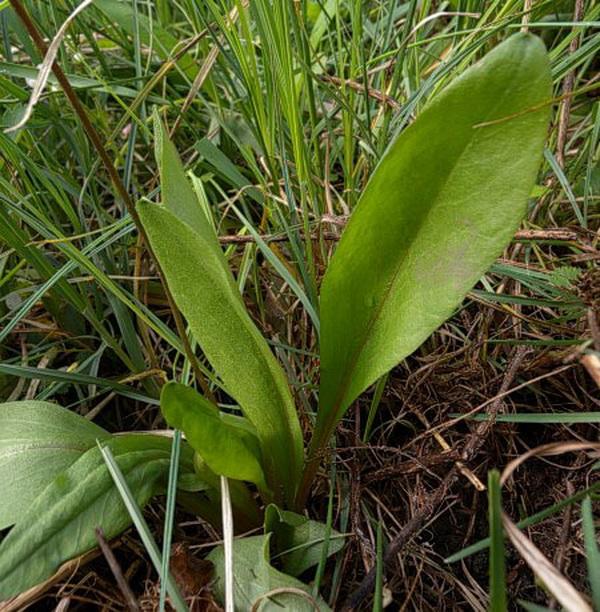
Photographic Location: The wildflower garden of the webmaster in Urbana, Illinois.
Comments: This is a little jewel of a plant. It closely resembles the more common Dodecatheon meadia (Shooting Star), but the flowers of Amethyst Shooting Star are usually a deeper shade of pink. In general, Amethyst Shooting Star is slightly smaller in size than Shooting Star, and the flowering stalk of each plant has a tendency to produce fewer flowers (less than 20); sometimes, the flowering stalk of a robust Shooting Star produces substantially more than 20 flowers. The most critical difference between these two plants, however, consists of the characteristics of their seed capsules: At maturity, the seed capsules of Amethyst Shooting Star are light brown and thin-walled, while the seed capsules of Shooting Star are dark brown and thick-walled. The basal leaves of these two species are very similar.
Cultivation: The preference is full or partial sun during the period of vegetative growth and development. This occurs during the spring and it is quite rapid. At this time, ample moisture and cool to moderate temperatures are required. This wildflower can adapt to a loamy garden soil, but it often occurs on rocky slopes in its native habitat. Some protection from the hot afternoon sun is desirable, but not required if there is ample moisture.
Range & Habitat: Amethyst Shooting Star is found in only a few counties in NW and west-central Illinois (see Distribution Map); it is native and uncommon. Habitats include thinly wooded bluffs, rocky cliffs, and sheltered areas of upland prairies where moisture tends to accumulate. In Illinois, this wildflower is found in hilly areas along the Illinois and Mississippi Rivers. In other states, it is often found in mountainous areas.
Faunal Associations: The flowers are visited by bumblebees and other bees for their pollen. Through the rapid vibration of their abdominal muscles, bumblebee visitors engage in "buzz pollination," which induces the flower to release its pollen. The low foliage is probably edible to mammalian herbivores, but it is rarely eaten because of its inconspicuous and ephemeral nature.

Photographic Location: The wildflower garden of the webmaster in Urbana, Illinois.
Comments: This is a little jewel of a plant. It closely resembles the more common Dodecatheon meadia (Shooting Star), but the flowers of Amethyst Shooting Star are usually a deeper shade of pink. In general, Amethyst Shooting Star is slightly smaller in size than Shooting Star, and the flowering stalk of each plant has a tendency to produce fewer flowers (less than 20); sometimes, the flowering stalk of a robust Shooting Star produces substantially more than 20 flowers. The most critical difference between these two plants, however, consists of the characteristics of their seed capsules: At maturity, the seed capsules of Amethyst Shooting Star are light brown and thin-walled, while the seed capsules of Shooting Star are dark brown and thick-walled. The basal leaves of these two species are very similar.
0
1
文章
Miss Chen
2017年12月22日

Description: This plant is a summer annual up to 2' tall and 3' across. Robust specimens branch frequently and have a bushy appearance with a flattened top, while dwarf specimens on sterile ground branch relatively little; the latter can be less than 6" tall. The stems are covered with appressed hairs that shortly turn brown; the lower stem on robust specimens becomes rather stout. The leaves are usually alternate, although the uppermost leaves are often opposite. They are up to 2" long and ¾" across, broadly lanceolate-oblong, and smooth along the margins. The upper surface of each leaf is green and finely pubescent, while the lower surface is whitish green and woolly from appressed hairs. Many of these hairs are stellate (branched and star-like). The petiole of each leaf is about ½" in length. The foliage exudes a fetid aroma from glandular secretions; the leaves and stems have a clear sap. Prairie Tea is monoecious. The small male flowers occur in erect clusters from the axils of the upper leaves. Each male flower has a woolly green calyx with 5 lobes that are spreading and oblong, 3-8 narrow white petals, and 3-8 white stamens. Only a single female flower develops from each axil of the upper leaves. Each female flower has a woolly green calyx with 5 lobes that are spreading and oblong, a woolly green pistil that is ovoid in shape, a pair of cleft styles at its apex, and no petals. The blooming period occurs from mid-summer to early fall and lasts about 1-2 months. The female flowers are initially erect, but later droop downward as the seed capsules develop. Each ovoid seed capsule is up to ¼" long and contains a single seed that is rather large and finely pitted (less often, 2 seeds are produced). This plant spreads by reseeding itself.
Cultivation: The preference is full sun, dry conditions, and poor soil containing rocky or gravelly material. The pH of the soil can be acid or alkaline. This plant is quite drought resistant, although some of the lower leaves may turn yellow and wither away. In more fertile soil, robust specimens are produced that are bushy and attractive.
Range & Habitat: The native Prairie Tea occurs occasionally in the southern half of Illinois (especially in the SW), but it is uncommon or absent elsewhere in the state (see Distribution Map). In the northern half of Illinois, this species is probably adventive from the south, otherwise it is native. Habitats include hill prairies, sandstone and limestone glades, thinly wooded bluffs, fallow fields, and gravelly areas along railroads. This species occurs in disturbed areas and higher quality habitats that are sunny and dry.
Faunal Associations: Little information is available about the insects that pollinate the flowers, but they are probably small bees, flies, and/or wasps. The caterpillars of Anaea andria (Goatweed Butterfly) feed on the foliage of Prairie Tea and other Croton spp. The large oily seeds of Croton spp. are attractive to many upland gamebirds and some songbirds, including the Mourning Dove, Wild Turkey, Prairie Chicken, Bobwhite, Cowbird, and various sparrows. The fetid foliage is unattractive as a source of food for mammalian herbivores, although goats will eat it. Sometimes, Croton spp. are referred to as 'Goatweed' or 'Doveweed' because of their value as a food source to these animals.

Photographic Location: Along an abandoned railroad in Vermilion County, Illinois.
Comments: The foliage of Prairie Tea is reasonably attractive, while the flowers are insignificant. The common name refers to the resemblance of robust specimens to cultivated tea plants; however, the foliage is unsuitable as a source of tea. Generally, Croton spp. are typical prairie plants of the southern plains; they are less typical of eastern tallgrass prairies, where they are often displaced by taller vegetation in fertile areas. Prairie Tea differs from other Croton spp. by the following characteristics: 1) Its leaves lack teeth, 2) each seed capsule contains only a single seed (or at most two), rather than three, 3) the female flowers are produced individually from the leaf axils, rather than in groups, and 4) the seed capsules do not exceed ¼" in length.
Cultivation: The preference is full sun, dry conditions, and poor soil containing rocky or gravelly material. The pH of the soil can be acid or alkaline. This plant is quite drought resistant, although some of the lower leaves may turn yellow and wither away. In more fertile soil, robust specimens are produced that are bushy and attractive.
Range & Habitat: The native Prairie Tea occurs occasionally in the southern half of Illinois (especially in the SW), but it is uncommon or absent elsewhere in the state (see Distribution Map). In the northern half of Illinois, this species is probably adventive from the south, otherwise it is native. Habitats include hill prairies, sandstone and limestone glades, thinly wooded bluffs, fallow fields, and gravelly areas along railroads. This species occurs in disturbed areas and higher quality habitats that are sunny and dry.
Faunal Associations: Little information is available about the insects that pollinate the flowers, but they are probably small bees, flies, and/or wasps. The caterpillars of Anaea andria (Goatweed Butterfly) feed on the foliage of Prairie Tea and other Croton spp. The large oily seeds of Croton spp. are attractive to many upland gamebirds and some songbirds, including the Mourning Dove, Wild Turkey, Prairie Chicken, Bobwhite, Cowbird, and various sparrows. The fetid foliage is unattractive as a source of food for mammalian herbivores, although goats will eat it. Sometimes, Croton spp. are referred to as 'Goatweed' or 'Doveweed' because of their value as a food source to these animals.

Photographic Location: Along an abandoned railroad in Vermilion County, Illinois.
Comments: The foliage of Prairie Tea is reasonably attractive, while the flowers are insignificant. The common name refers to the resemblance of robust specimens to cultivated tea plants; however, the foliage is unsuitable as a source of tea. Generally, Croton spp. are typical prairie plants of the southern plains; they are less typical of eastern tallgrass prairies, where they are often displaced by taller vegetation in fertile areas. Prairie Tea differs from other Croton spp. by the following characteristics: 1) Its leaves lack teeth, 2) each seed capsule contains only a single seed (or at most two), rather than three, 3) the female flowers are produced individually from the leaf axils, rather than in groups, and 4) the seed capsules do not exceed ¼" in length.
0
0



